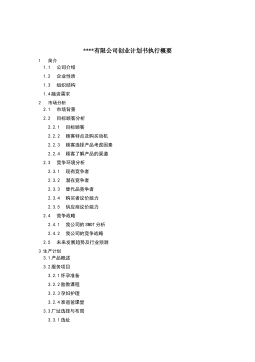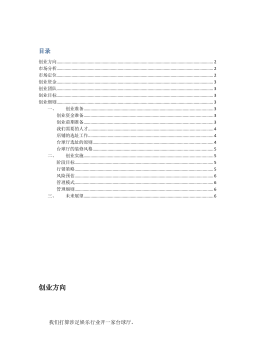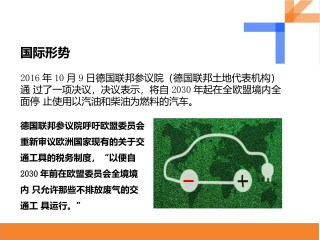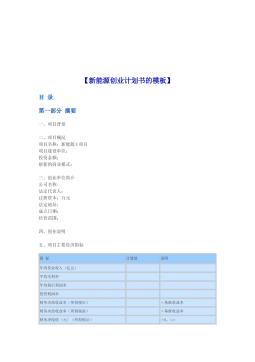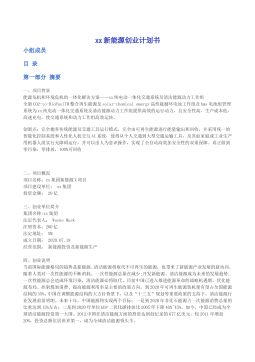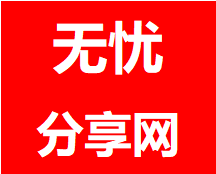建筑物布局与隔墙对街道峡谷内污染物扩撒影响的数值仿真研究
VIP免费
摘 要
随着中国城市化进程的加快,建筑物不断密集化,汽车保有量与日俱增,汽
车排放的尾气污染日益严重,人民生活质量受到了很大的影响。尤其近些年,随
着车辆数量急剧增加,机动车尾气排放已成为我国大城市中空气污染的主要来源。
机动车排放污染物在街道周围的扩散主要受街道两侧建筑物周围的流场所控
制,而该流场主要受街道布局的影响,街道峡谷是其中一种典型的街道布局形式。
街道峡谷内机动车尾气对机动车驾驶员、乘客、行人以及道路两侧居民等人的身
体健康带来直接危害。由于机动车尾气排放已成为大都市中空气最主要的污染来
源,使得街道峡谷内污染物对流扩散问题已成为环境工程领域研究的热点。
本文采用数值模拟的方法,探究了不同建筑物布局、上游建筑物的不同宽度、隔
离墙对街道峡谷内的气流旋涡运动特征和污染物扩散分布的影响,揭示出了相应
的峡谷内气流运动和污染物扩散的影响规律。
基于二维不可压缩流动的时均化 N-S 方程、湍流模型和污染物对流扩散方程,
构建起模拟街道峡谷内气流运动和污染物扩散的数学模型,并利用德国汉堡大学
风洞实验数据对所建模型进行了验证。研究表明,数值模拟结果与风洞实验数据
非常接近(对于城市街道峡谷工况,数值模拟结果和风洞实验结果的平均误差、
最大误差和最小误差分别为 7.6%、16.4%和0.3%;对于孤立街道峡谷工况,数值
模拟结果和风洞实验结果的平均误差、最大误差和最小误差分别为 8.0%、16.1%
和0.2%)。
采用验证过的 CFD 模型,模拟了 10 种不同情况下的孤立街道峡谷内气流运
动和污染物扩散。计算得到的气流速度场和污染物扩散分布图表明峡谷内气流旋
涡结构和污染物分布与上游建筑物宽度、建筑物布局密切相关:(1)随着上游建
筑物宽度的增加,街道峡谷内的漩涡中心位置向下偏移,导致街道峡谷内速度变
大;(2)当 W/H=0.5,1.0,2.0(W是上游建筑物的宽度,H是建筑物的高度),
上游建筑物屋顶上方形成回流区,区域覆盖了整个建筑物屋顶;但当 W/H=2.5,
3.0 时,气流会再次附着在上游建筑物屋顶;(3)当上游建筑物的宽度小于临界宽
度(W=2H)短时,增加上游建筑物宽度将导致背风面污染物浓度相应的增加,上
游建筑物屋顶污染物的浓度随之减小;(4)当上游建筑物的宽度大于临界宽度时,
上游建筑物屋顶的污染物浓度及其的小,可以忽略不计,并且背风面的污染物浓
度几乎不因增加上游建筑宽度而受影响;(5)当建筑物放在峡谷的逆风向(上风
向)时,气流会附着在上游建筑物屋顶上,于是上游建筑物屋顶上污染物浓度很
小,几乎可以忽略不计;(6)增加上游建筑物个数时,街道峡谷内污染物浓度以
及上游建筑物屋顶的污染物浓度显著增加,而下游建筑物屋顶的污染物浓度非常
小。
采用验证过的 CFD 模型,同样模拟了 9种不同情况下的城市街道峡谷内气流
运动和污染物扩散。模拟结果表明城市街道峡谷内气流旋涡结构和污染物分布与
隔离墙密切相关:(1)当隔离墙的高度是 0.5m 时,对于上游建筑物背风面,污染
物浓度有所减小,下游建筑物的迎风面上污染物浓度有所增加;(2)当隔离墙的
高度增加到 0.8m,在峡谷的背风面、迎风面的污染物浓度都有所增加;(3)街道
峡谷宽度变宽,进入街道峡谷里的空气通量变大,空气速度也随着变大,污染物
迅速的扩散出去,街谷内的污染物浓度相应的减少;(4)在街道峡谷中间添加一
个隔离墙,隔离墙充当挡板的作用,使得背风面、迎风面污染物浓度都增加;当
在靠近左右人行道附近各加一个墙的时候,街谷背风面、迎风面污染物浓度变化
不大;当放置三个墙的时候,峡谷迎风面几乎不变,有略微增加,背风面有所减
少。
本研究成果对于城市道路建筑布局设计、环境监测中科学合理布设测试点位
置以及预测街道峡谷内的空气质量等具有指导意义。
关键词:街道峡谷 建筑物布局 隔离墙 气流运动 污染扩散 数
值模拟
ABSTRACT
As China's urbanization process accelerated, buildings densely and increasing car
ownership, which made the exhaust pollution becomes more and more serious, people's
quality of life are affected seriously. Especially in recent years, along with the number
of vehicles increase sharply, motor vehicle exhaust emission has become the main
source of air pollution in big cities in China.
The dispersion of atmospheric pollutants in urban environments depends on the
turbulent airflow around complex building structures. Street canyon is one typical
configuration, within street canyons, the pollutants emitted from motor vehicles have a
direct impact on the health of the drivers, passengers, pedestrians, and residents nearby.
Since traffic is accepted to be a major emission source of air pollutants in urban areas,
investigations of dispersion processes in street canyons have become a focal point in
environment research. This study used numerical simulation methods, analyzing a large
number of numerical dates, investigating the effect of upstream building width, upwind
building configuration and low boundary wall on wind flow and pollutant dispersion in
street canyons.
Based on the Reynolds Averaged Navier-Stokes equations coupled with the
standard
k
turbulence model and the transport equation for pollutant concentration,
a two-dimensional numerical model for evaluating airflow and pollutant dispersion
inside an urban street canyon is firstly developed using the FLUENT code, and then
validated against the experimental data obtained from a detailed wind tunnel study by
Meroney in Hamburg University. It was found that the model performance is
satisfactory (for urban street canyon, the mean, maximum and minimum relative
deviations between the numerical and experimental results are 7.6%、16.4% and 0.3%,
respectively; for isolate street canyon, they are 8.0%、16.1 and 0.2%).
Using established CFD model, 10 kinds of situations on airflow and pollutant
dispersion within an isolated street canyon is investigated numerically. The computed
air velocity vector fields and pollutant concentration contours indicate that the
in-canyon vortex dynamics and pollutant distribution patterns depend on the upstream
building width, upwind building configurations strongly: (1) the location of in-canyon
vortex center shifts downwards as the upstream building width increase; (2) the
recirculation zone above the upstream building roof covers the whole building roof for
W/H=0.5,1.0,1.5 and 2.0 (W is the upstream building width and H is the building height)
case whereas the flow reattaches the upstream building roof for W/H=2.5 and 3.0 cases;
(3) when the upstream building width is shorter than the critical width Wc(=2H),
increase of the upstream building width leads to increase of pollution level on the
leeward wall and to decrease of roof-level concentration at the upstream building; (4)
when the upstream building width is longer than the critical width, the roof-level
concentrations at the upstream building roof are negligibly small, and the pollution level
on the leeward wall is almost unaffected by further increasing the upstream building
width; (5) when building are placed upwind of the canyon, the flow attaches the
upstream building roof and thus the roof-level concentrations at the upstream building
are negligibly small; (6) the pollution levels inside the canyon and on the downstream
building roof increase significantly with the number of upwind buildings.
Using established CFD model, 9 kinds of situations within an urban street canyon
is investigated numerically. And the computed air velocity vector fields and pollutant
concentration contours also indicate that the in-canyon vortex dynamics and pollutant
distribution patterns depend on the wedge-shaped roof configurations strongly: (1)
when the height of the low boundary wall is 0.5m, the concentration of the leeward is
decreased, while the concentration of windward is increased; (2) when the height of low
boundary wall is 0.8m, both the concentration of leeward and windward are increased;
(3) when the width of the canyon is longer, the air flux has increased, the velocity
increased too, which made the concentration of pollution decreased; (4) when put one
low-boundary wall in the canyon, the wall worked as a baffle, which made the
concentration of leeward and windward increased; when put two walls between footpath
and driveway, the change of the concentration are negligibly small; when put three walls
on the canyon, there’s little decrease in leeward, while the change on the windward is
negligibly small.
The results of this study have directive signigficance on some fields, which include
the layout of urban road construction, setting a scientific and rational test point location
in the environmental monitoring ,and forcasting the air qualities of street canyons.
Key word: Street canyon, building configuration, low boundary wall,
airflow, pollutant dispersion, numerical simulation
目 录
中文摘要
ABSTRACT
第一章 绪 论 .................................................................................................................. 1
1.1 课题研究的背景 .................................................................................................... 1
1.1.1 空气污染现状 ................................................................................................. 1
1.1.2 街道峡谷内空气污染现状 ............................................................................. 2
1.1.3 污染物扩散的影响因素 ................................................................................ 3
1.2 国内外研究现状 .................................................................................................... 4
1.3 问题的提出 ............................................................................................................ 8
1.4 论文的目的、意义及主要内容 ............................................................................ 9
1.4.1 研究的目的、意义 ........................................................................................ 9
1.4.2 研究的主要内容 ............................................................................................ 9
1.5 论文的创新点 ...................................................................................................... 10
第二章 街道峡谷内气流运动和污染物扩散的理论基础以及 CFD 模型的构建 ..... 11
2.1 街道峡谷简介 ....................................................................................................... 11
2.2 CFD 模型 .............................................................................................................. 13
2.2.1 气流运动控制方程 ...................................................................................... 13
2.2.2 污染物对流扩散方程 .................................................................................. 16
2.2.3 计算区域和边界条件 .................................................................................. 17
2.2.4 网格划分 ...................................................................................................... 19
2.2.5 数值算法 ...................................................................................................... 21
2.2.6 模型验证 ....................................................................................................... 21
第三章 建筑物宽度对街道峡谷内污染物扩散的影响 .............................................. 23
3.1 模拟计算所采用的孤立街道峡谷几何结构形态 .............................................. 23
3.2 CFD 模型 .............................................................................................................. 25
3.3 模型验证 .............................................................................................................. 26
3.4 数值模拟结果及分析 .......................................................................................... 28
3.4.1 流场计算结果分析 ...................................................................................... 28
3.4.2 污染物扩散的计算结果分析 ....................................................................... 31
3.4.3 近地面污染物扩散分析 .............................................................................. 33
3.5 本章小结 .............................................................................................................. 34
第四章 建筑物布局对街道峡谷内污染物扩散的影响 .............................................. 35
4.1 模拟计算所采用的几何结构形态 ...................................................................... 35
4.2 CFD 模型 .............................................................................................................. 36
4.3 数值模拟结果及分析 .......................................................................................... 36
4.3.1 流场计算结果分析 ...................................................................................... 36
4.3.2 污染物扩散的计算结果分析 ...................................................................... 38
4.3.3 近地面污染物扩散分析 ............................................................................... 40
4.4 本章小结 .............................................................................................................. 40
第五章 隔离墙对街道峡谷内污染物扩散的影响 ...................................................... 42
5.1 模拟计算所采用的城市街道峡谷几何结构形态 .............................................. 42
5.2 CFD 模型 .............................................................................................................. 43
5.2.1 网格划分以及敏感性分析 .......................................................................... 44
5.2.2 计算区域和边界条件 .................................................................................. 45
5.3 模型验证 .............................................................................................................. 46
5.4 数值模拟结果及分析 .......................................................................................... 48
5.4.1 隔离墙高度的影响 ...................................................................................... 48
5.4.2 建筑物与街道宽高比(H/W)的影响 ...................................................... 53
5.4.3 墙个数的影响 .............................................................................................. 55
5.4.4 污染源发放位置的影响 .............................................................................. 59
5.4.5 近地面污染物浓度图 .................................................................................. 62
5.5 本章小结 .............................................................................................................. 65
第六章 结论与展望 ...................................................................................................... 67
6.1 结论 ...................................................................................................................... 67
6.2 展望 ...................................................................................................................... 68
参考文献 ........................................................................................................................ 70
附 录 ............................................................................................................................ 75
在读期间公开发表的论文和承担科研项目及取得成果 ............................................ 78
致 谢 ............................................................................................................................ 79
第一章 绪 论
1
第一章 绪 论
本章主要介绍了课题研究的背景以及街道峡谷内污染物对流扩散规律的研究
进展,并提出本论文研究的目的意义、主要工作内容及创新点。
1.1 课题研究的背景
世界卫生组织和联合国环境组织发表了一份报告,上面提到:“空气污染已成
为全世界城市居民生活中一个无法逃避的现实。”的确,空气污染目前是全球最严
峻的环境问题之一。2011 年,对我国 522 个城市进行了一次监测,数据表明:4.2%
的城市达到国家环境空气质量一级标准,56.1% 的城市达到二级标准,有 39.7%
的城市处于中度或重度污染[1]。工业文明促进了城市的快速发展,为人类创造了巨
大财富,同时也把数十亿吨的废气和废物排入大气中,将人类赖以生存的大气圈
变成了空中垃圾库和毒气库。此时,发展中国家正面临着上个世纪中叶以来发达
国家所面临的同意的空气污染问题。世界资源研究所发布的报道《治理全球空气
污染问题迫在眉睫》,站在发达国家的位置上,分析了目前全球,尤其是中国等发
展中国家,所面临的空气污染的现状与挑战[2]。
1.1.1 空气污染现状
(1) 空气污染类型
空气污染物对环境和人类健康产生了巨大的危害,主要存在三种污染物:①
二氧化硫(SO2),在冶炼或者其它工业过程中,由含硫量高的化石燃料在燃烧过程
中产生;②氮氧化物(NOX),由移动源(如汽车)和静止源(如发电厂)产生;③
颗粒物(PM),即指悬浮在空气中的细小颗粒,可根据粒径大小来分类,粒径小于
10μm的称为PM10,粒径小于2.5μm的称为PM2.5,在工业生产中,燃烧硫氧化物、
氮氧化物以及煤炭都能放出大量的颗粒物。其他的污染物还包括:一氧化碳(CO)、
铅、臭氧、挥发性有机物(VOCs)等等。
(2) 世界范围内的空气污染现状
随着工业化进程的加速,欧美等工业发达国家先后出现了不同程度上的空气
污染。在20世纪50年代以前,主要能源来源是煤,该时期的空气污染主要是以SO2
和烟尘为主的污染问题,所以人们开发了大量的脱硫和硝烟除尘技术,试图来治
理这种由工业排放引起的空气污染问题。随着经济的不断发展,到20世纪80年代
后期,机动车数量迅速增加,石油的开采量也随之不断增加,空气污染问题逐渐
发展成交通型污染,人们对交通污染问题治理的关注急剧增加。以美国为例,自
建筑物布局与隔墙对街道峡谷内污染物扩散影响的数值仿真研究
2
1970年以来,美国的汽车里程总数相比以前几乎增长了150%,但 汽车尾气中的NOX
和SO2含量却有所下降,这主要归因于更严格的汽车引擎和燃料标准。然而,在许
多发展中国家,汽车、发电厂和各类工厂数量在与日俱增,但是却没有更清洁的
技术,也没有制定更严格的规定。总的来说,在过去的几十年中,发达国家已经
可以很有效的控制空气污染,尤其是交通污染问题,发展中国家仍处于起步阶段。
(3) 我国空气污染现状
目前,我国能源结构仍以煤为主,占一次能源消费总量的 75%。中国的大气
污染主要是由燃煤造成的,属于能源结构性的煤烟型污染,主要成分是二氧化硫
和烟尘。目前全国有 62.3%的城市,空气中二氧化硫年平均浓度超过国家环境空气
质量二级标准,在国内的 640 个城市中,空气质量符合国家一级标准的还不到 1%。
近年来,中国机动车行业迅速发展,汽车尾气污染问题也日趋严重。2003 年,城
市环境空气质量检测结果显示,北京、上海、广州等大城市空气污染物中机动车
排放的氮氧化物、碳氢化合物、一氧化碳、细颗粒物所占平均比例分别为 68%、
75%、80%、和 50%,机动车尾气已成为这些城市大气污染的第一大污染源[3]。
以上海市为例,上海作为我国最大的经济中心城市,不断增加的机动车数量给城
市带来了日益严峻的交通问题,同时又加重了城市大气环境污染的负荷,汽车尾
气排放问题俨然成为了影响人们生命健康、城市发展的重大问题。此外,由于上
海目前的能源结构仍以煤为主,所需的一次能源全靠外部输入,煤炭占一次能源
的比例达 60%左右,但是煤炭的燃烧利用率低,严重污染了环境。近些年来,通
过不断的调整能源结构,较好的控制了煤烟型空气污染问题,但中心城区机动车
尾气污染仍较突出[4]。
总而言之,随着全世界范围内机动车保有量的迅速增长,势必会引起城市空
气质量的恶化,机动车排放导致的空气污染已成为了国内外城市主要的污染来源。
1.1.2 街道峡谷内空气污染现状
一种典型的建筑物布局形态,即两旁都有连续、高大建筑物的相对狭长的街
道空间称为街道峡谷[5]。城市环境里大气污染物的扩散受到复杂建筑物结构周围风
场的控制,由于建筑物的存在以及风的“下洗”作用,导致了气流湍流度的增加,
对扩散参数和平均风场都产生了一定的影响。
随着交通运输的发展,特别是在大中型城市里,机动车保有量迅速增加。虽
然按我国总人口、国土面积和汽车总保有量计算,汽车密度可谓很小,但由于我
国汽车工业起步较晚,汽车制造工艺落后,燃料中铅的含量限制了废气后处理中
催化装置的应用,大量国产汽车排放量为发达国家的 15~20 倍左右,加之我国的
第一章 绪 论
3
汽车日常保养和检修系统又极不完善,大量汽车排放的污染物浓度可能还要高出
数倍甚至数十倍,导致机动车排污已成为城市大气污染的主要来源[6]。
街道峡谷一般是城市中人口密度比较大的区域,交通车流量和人流量都比较
密集,在这个区域里,行人、城市居民以及机动车驾驶员暴露在空气中可能性很
大,原因在于:城市特殊的下垫面以及微气候影响到了污染物在空气中的传输。
截止到 2005 年,汽车排放的尾气占了大气污染(挥发性有机化合物排放)的 28%,
位居第二。
1.1.3 污染物扩散的影响因素
影响污染物在大气中扩散的主要气象因素有风、温度层结、大气湍流、大气
稳定度、地形和地物等[7]。污染物排入大气后,主要在风和湍流作用下进行输运和
扩散。通常称风和湍流为气象的动力因子,而温度层结和大气稳定度被称作气象
的热动力因子[8]。
1. 风
风对污染物扩散的影响主要有两方面:第一,风向影响污染物迁移的方向;
第二,风速影响污染物在大气中的稀释速度。污染物排入大气之后,会顺风而下,
污染物靠风的输送作用沿下风向地带进行稀释。污染物排放源的下风向地区,大
气污染比较严重,而其上风向,污染程度就轻得多。
2. 温度结层
大气温度层结决定大气稳定度,大气污染物的迁移扩散受温度层结的影响很
大。当 r>1℃/100m 时,气温随高度增加而明显降低,空气会产生上下对流运动,
湍流随之发展,大气中的污染物易扩散。r 越大,形成的气象条件也就有利于污染
物的扩散。r=0 时,气温在垂直方向没有变化,很难产生上下的对流运动,污染物
在大气中扩散困难。当 r<0 时,气温随高度增加而升高,此时暖而轻的空气位于上
方,冷而重的空气在下面,大气稳定,大气中的污染物滞留在逆温层底下难以敞
开。随着逆温持续时间的增加,会使近地面处大气中的污染物浓度逐渐增高而形
成污染。
3. 大气湍流
湍流的扩散作用与风的稀释作用不同,在风的作用下,污染物进入大气之后,
可以顺风拉长。湍流则使得污染物在三维空间的方向迅速扩散,湍流越强,扩散
的效果越显著。例如,湍流作用会使烟囱排出的成团烟气产生上下左右的移动,
体积越来越大,最后消失在大气中。
相关推荐
-
新能源项目融资计划VIP免费
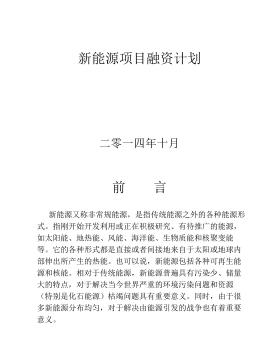
 2024-12-31 12
2024-12-31 12 -
新能源汽车运营服务公司商业计划书VIP免费
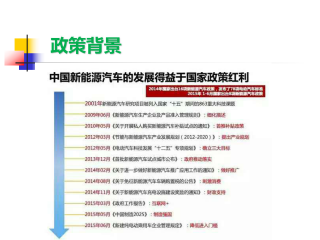
 2024-12-31 8
2024-12-31 8 -
上海xxx新能源股份有限公司商业计划书VIP免费

 2024-12-31 47
2024-12-31 47 -
绿特新能源商业计划书VIP免费
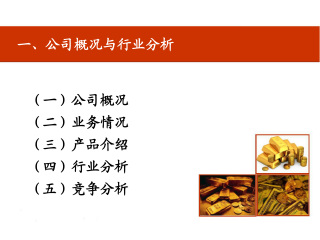
 2024-12-31 9
2024-12-31 9 -
关于新能源充电项目创业计划VIP免费
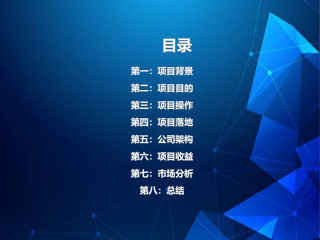
 2024-12-31 13
2024-12-31 13 -
太阳能充电器创业计划书模板VIP免费
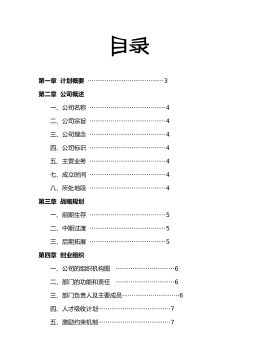
 2025-01-09 6
2025-01-09 6 -
中国新能源及节能环保材料项目商业计划书VIP免费
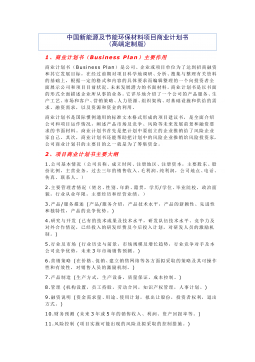
 2025-01-09 4
2025-01-09 4 -
中国(陕西)xxxx新能源股份有限公司VIP免费
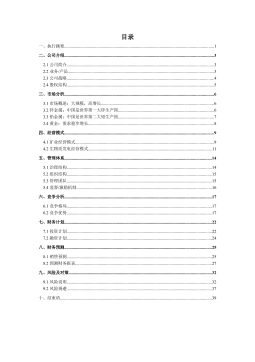
 2025-01-09 5
2025-01-09 5 -
阳光新能源公司创业计划书VIP免费
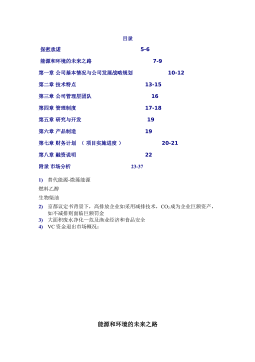
 2025-01-09 4
2025-01-09 4 -
新型纯电动安全汽车项目商业计划书VIP免费
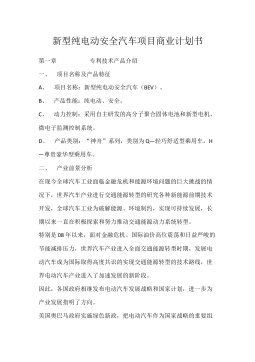
 2025-01-09 5
2025-01-09 5
作者:牛悦
分类:高等教育资料
价格:15积分
属性:83 页
大小:8.25MB
格式:PDF
时间:2025-01-09


